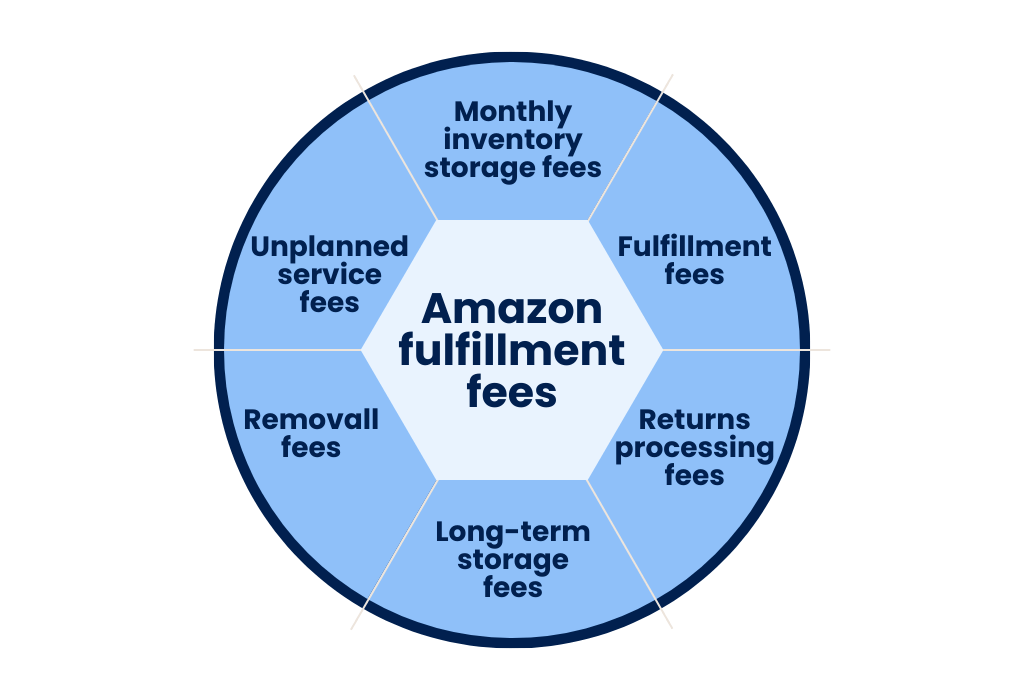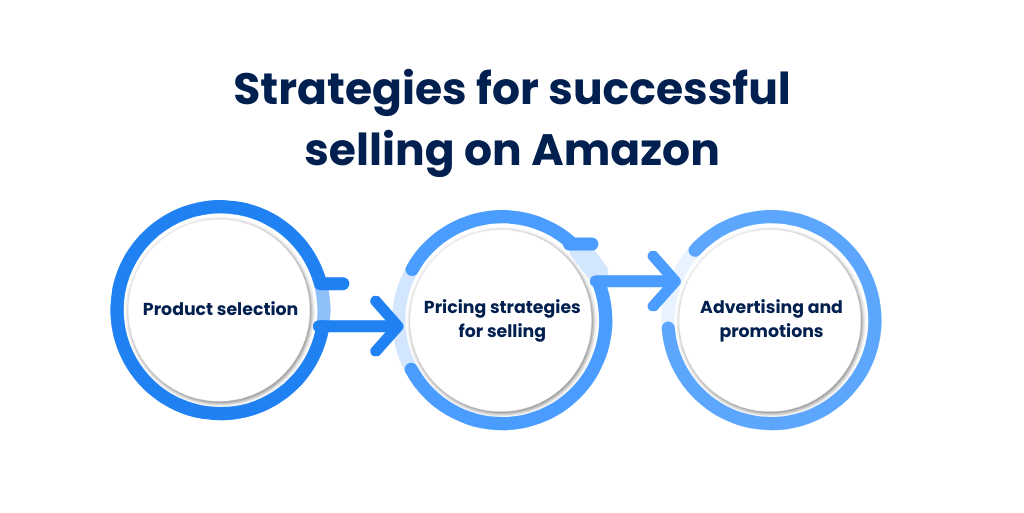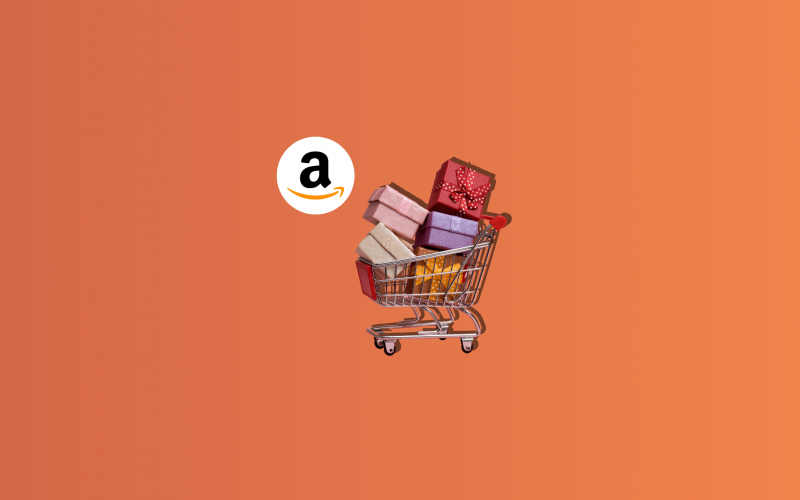It’s not a big surprise that Amazon is the top player in the world of online shopping. Nearly everyone today has either bought something from there or at least knows about this popular marketplace. Its expansive reach and advanced infrastructure present an unprecedented opportunity for sellers seeking to tap into a vast marketplace.
However, even with its large customer base and advanced systems that offer great potential, the question remains: Is selling on Amazon worth it? So, here we’ll learn the ins and outs of getting started with selling on Amazon, going through the benefits and challenges to give you the information you need to make a decision.
Here’s what you’re going to learn:
1. Is it worth trying to sell on Amazon?
2. Fulfillment By Amazon (FBA)
3. What are Amazon fulfillment fees?
4. Challenges of selling on Amazon
5. Benefits of selling on Amazon
6. Strategies for successful selling on Amazon
7. FAQs
Is it worth trying to sell on Amazon?
Yes. But deciding to sell on Amazon involves several important factors to consider:
- Clarify your business goals
Do you want to reach more customers, increase sales, or boost brand visibility?
- Assess if your products are a good fit
When evaluating product suitability, it’s important to assess demand by researching trends and sales data, analyze competition to identify opportunities for differentiation, and determine the uniqueness of your product to understand its appeal to customers.
- Plan and optimize carefully
Focus on optimizing your product listings, using the right keywords, and advertising effectively to attract more customers. Keep an eye on market trends and competitors to stay ahead, and adjust your pricing to make sure you’re making a profit.
Fulfillment By Amazon (FBA)
Fulfillment By Amazon (FBA) makes selling easier by letting sellers focus on sales and profits while Amazon handles the shipping logistics.
With FBA, sellers send their products to Amazon’s warehouses, where Amazon takes care of sorting, packing, and shipping them to customers. This is particularly helpful for new sellers or unsure about shipping processes.
Learn about the best Amazon FBA tools for successful sellers.
Main features of Amazon FBA
Amazon FBA has several main features, which help sellers and improve the operation of stores. Let’s take a closer look at them:
1. Multi-channel fulfillment
FBA goes beyond just fulfilling orders made on Amazon.com. Sellers have the flexibility to use FBA for orders coming from different places, like their own websites or other online shopping sites.
2. Warehousing and storage
Sellers have the option to keep their inventory in Amazon’s fulfillment centers, which means they don’t need to maintain their own warehouse space. The fees Amazon charges for this storage are based on how much space the inventory takes up and how long it’s kept there. These rates can change depending on the time of year.
3. Picking, packing, and shipping
When a customer places an order, Amazon handles everything from getting the product out of storage to packing it up and sending it off to the customer. This process is streamlined and automated, making sure that deliveries are made swiftly.
What are Amazon fulfillment fees?
To use FBA, you need to understand what Amazon’s fees are. Fee per unit includes picking and packing your orders, shipping and handling, customer service, and product returns. Fees are based on the weights and dimensions of your product.

There are several types of fees:
1. Monthly inventory storage fees
When you store your products in Amazon’s warehouses, you’ll be charged a fee every month. This fee is based on how much inventory you’ve stored there.
Starting April 1, 2024, Amazon will decrease the storage fees for regular-sized products during off-peak months (January-September) by $0.09 per cubic foot. This change will appear in the storage charges for April 2024, which will be billed in May 2024.
2. Fulfillment fees
These Amazon FBA fees are similar to standard dropshipping fees. Whenever a sale occurs, you’ll be charged per unit to cover the costs of locating, packing, and shipping the item to the customer. These fees also include customer service and managing any returns.
Starting April 15, 2024, Amazon is lowering FBA fulfillment fees for standard-sized products by $0.20 per unit and for large bulky-sized products by $0.61 per unit. Also, products priced below $10 will continue to receive an extra $0.77 discount per unit.
Additionally, starting February 5, 2024, eligible products in the Ships in Product Packaging (SIPP) program will receive fulfillment fee discounts ranging from $0.04 to $1.32, depending on size and weight.
3. Returns processing fees
You’ll incur charges for orders whenever Amazon extends the offer of free return shipping to customers. This means that if a customer decides to return a product, you as the seller will be responsible for covering the associated costs.
Beginning June 1, 2024, Apparel and Shoes categories will have per-order return processing fees instead. For small standard items, the fees range from $1.65 to $1.95. Large standard items incur fees ranging from $2.04 to $3.89. For large bulky items, the fee is $6.74.
4. Long-term storage fees
You’ll be charged monthly for all items stored in a fulfillment center for over 365 days. Keeping your inventory in good shape can help you steer clear of these long-term storage fees.
In 2024, Amazon’s long-term storage fees or aged inventory surcharge fees are likely to stay unchanged. These fees, which range from $0.50 to $6.90 per cubic foot, are imposed by Amazon to discourage sellers from keeping large amounts of inventory that isn’t selling quickly.
5. Removall fees
For a specific fee, you’ll have the option to sell or return your items at the fulfillment center. This means that you can either sell your products through Amazon’s platform or choose to return them to the fulfillment center if needed.
In 2024, Amazon will increase FBA removal or disposal fees per unit by an average of 7%. These fees cover Amazon’s costs for removing and disposing of unsuitable inventory. Effective February 5th, 2024, fees will rise for all size tiers, with standard-sized items ranging from $1.04 to $2.89, and large bulky items from $3.12 to $14.32.
6. Unplanned service fees
As its name suggests, this fee applies to unscheduled services. For example, if the product arrived at the order fulfillment center without the necessary markings.
Unplanned services fees in the Amazon FBA program are incurred when sellers don’t follow Amazon’s shipment preparation guidelines.
Challenges of selling on Amazon
Selling competition
Competition on the platform is tough, with many sellers trying to get customers’ attention. There are lots of products available, all competing for sales.
To succeed, sellers need to be creative and find ways to stand out. This could mean:
- Having clear product listings;
- Having competitive prices;
- Having excellent customer service;
- Offering something unique.
While it’s challenging, there are also plenty of opportunities for sellers to find their place and do well.
Complex structure of Amazon fees and costs
Understanding and effectively managing the fees and costs linked to selling on Amazon is essential because they can significantly impact profit margins.
These fees include various charges such as:
- Referral fees;
- Fulfillment fees;
- Storage fees;
- Subscription fees for certain seller accounts.
If not properly accounted for, these costs can eat into the money a seller makes from each sale, reducing overall profitability. Therefore, sellers must carefully analyze and track these expenses to ensure they are pricing their products competitively while still maintaining a healthy profit margin.
Solving this problem with Synder
Any Amazon merchant struggles with accurate and compliant online sales bookkeeping for the platform.
You have two options for this task: you can handle it manually, which takes time and can lead to errors, or automatically with Synder, which is much easier. Synder offers QuickBooks Amazon integration, making the process much smoother.
Automate the import of your Amazon fees, and never worry about the manual work again! With Synder, you can categorize your business transactions, including sales, fees, taxes, and more, as you want. So you’ll always have accurate financial reporting.
Interested in Synder? Visit our Weekly Product Demo to find the best way for your business bookkeeping and accounting automation. To test the features, create a Synder free account and link your Amazon account to it.
Find out more about Synder’s Amazon QuickBooks Online integration.
Compliance with Amazon policies
Amazon has strict rules that sellers must follow, covering areas like product listings, customer communication, and seller performance metrics. Staying up-to-date with these policies and ensuring compliance is essential to avoid penalties such as account suspension or loss of selling privileges.
As mentioned previously, beginning June 1, 2024, Amazon will implement a returns processing fee for products with high return rates across all categories except for apparel and shoes.
This requires sellers to constantly monitor policy updates, review their practices, and make necessary adjustments to stay within Amazon’s guidelines. While it can be challenging, adhering to Amazon’s policies is essential for maintaining a successful and sustainable business on the platform.
Benefits of selling on Amazon
Access to Amazon’s customer base of over 310 million active users offers numerous benefits for sellers, making it easier to establish and grow their businesses. Here’s how:
Ready-made marketplace
By using Amazon, sellers can reach a wide audience without having to spend a lot on marketing. Amazon’s platform is like a ready-made marketplace where sellers can show their products to interested buyers. This makes it easier for sellers to find customers and sell their products. Plus, because Amazon is a well-known and trusted brand, sellers can benefit from the credibility and visibility it offers.
Amazon also simplifies the task of attracting and interacting with customers. Sellers just need to list their products, and Amazon’s advanced search and recommendation systems do the rest, connecting them with interested shoppers.
Reduced marketing efforts
Selling on your own Amazon store means sellers can save a lot of time and money on traditional marketing efforts. Unlike having their own website or store, where they need to spend a lot on marketing to attract customers, Amazon already has a huge number of people visiting every day.
This means sellers don’t have to spend as much on marketing. Instead, they can focus on making their product listings better and providing great customer service.
Enhanced visibility
Amazon’s search and recommendation algorithms are essential for sellers on the platform. These algorithms analyze customer behavior and preferences to connect them with products they’re likely to be interested in. By using these algorithms effectively, sellers can improve their product visibility.
Amazon’s platform is designed to showcase products to users who are most likely to buy them. Sellers can optimize their product listings with relevant keywords, high-quality images, and informative descriptions. This helps them attract the attention of potential buyers and increase their chances of making sales.
Trust and credibility with consumers
Being on Amazon offers your business a significant advantage in building trust and credibility with consumers:
- Instant boost in сredibility
Simply being present on Amazon instantly elevates your business’s credibility. This is because customers inherently trust the platform and its streamlined fulfillment process. Amazon has built a solid reputation over the years as a reliable and customer-centric marketplace. Being associated with such a reputable platform can reassure potential buyers about the legitimacy and reliability of your business.
- Trust in the shopping experience
Customers feel more confident making purchases on Amazon due to their trust in the platform’s ability to deliver a seamless shopping experience. From browsing through product listings to the checkout process and timely delivery, Amazon ensures a smooth and hassle-free journey for shoppers. This trust extends to the fulfillment process as well, where Amazon’s efficient logistics network guarantees timely delivery and reliable customer service.
- Reviews and ratings
Amazon’s review system allows customers to leave feedback and ratings for products and sellers. Positive reviews and high ratings can significantly enhance your business’s credibility and trustworthiness in the eyes of potential buyers. By consistently providing excellent products and customer service, you can earn positive reviews and build a strong reputation on the platform.
Overall, being on Amazon provides your business with a valuable opportunity to leverage the platform’s reputation and trustworthiness to establish credibility with consumers. By delivering a positive shopping experience and maintaining high standards of service, you can build trust and loyalty among customers, ultimately driving sales and success for your business.
Strategies for successful selling on Amazon

1. Product selection
Selecting the right product to sell on Amazon is essential for your business success. It’s important to find items that are popular and in demand, but also ones where the competition isn’t too overwhelming.
- You could opt for private labeling, which involves selling products made by others under your own brand. For instance, you could source high-quality skincare products from a manufacturer, label them with your brand name, and sell them on Amazon.
- You could explore retail arbitrage, where you buy discounted products from retail stores and resell them on Amazon for a profit. For example, you might purchase clearance electronics from a local store and list them at a higher price on Amazon’s platform.
By carefully choosing and sourcing your products, you increase your chances of building a profitable business on the platform.
2. Pricing strategies for selling
A well-planned pricing strategy is vital for your success on Amazon. Pricing your products competitively is key to winning the Buy Box, where customers can quickly add items to their cart and purchase them. It’s a prime spot on the product page that showcases the seller offering the product, along with the price and shipping details. Winning the Buy Box is crucial because it greatly boosts your product’s visibility and increases the chances of making a sale.
To stay ahead of the competition, consider using dynamic pricing tools. These tools allow you to monitor market trends and adjust your prices accordingly. By staying flexible and responsive to changes in demand and competition, you can ensure that your products remain both appealing and profitable.
3. Advertising and promotions
Using Amazon’s advertising options like Sponsored Products can boost your product’s visibility. These tools help you target your audience better, making your products more visible in search results and on relevant pages.
Running promotions and discounts can also boost sales and improve your product’s ranking. These offers create urgency for customers to buy, driving immediate sales and potentially improving your product’s position in Amazon’s search results.
Conclusion
Selling on Amazon can be a lucrative opportunity, but it does come with its fair share of challenges. But there’s no need to be afraid. It’s essential to understand how the Amazon marketplace works and make the most of the resources Amazon provides. By creating a clear plan and strategy, sellers can simplify the process of selling on Amazon.
Certainly, you may come across hurdles and setbacks, but with determination and careful planning, the benefits can surpass the challenges. By weighing these factors and thinking about how they align with your goals, you can make a well-informed decision about whether selling on Amazon is the right choice for you.
FAQs
Can you really make money as an Amazon seller?
Yes, you can make money as an Amazon seller. Many sellers earn substantial incomes by leveraging the platform’s vast customer base and streamlined fulfillment services. Success often depends on factors such as product selection, pricing strategy, marketing efforts, and customer service.
Is selling on Amazon worth it?
Selling on Amazon with Fulfillment by Amazon (FBA) can lead to significant profitability for sellers. Many sellers experience a notable increase in sales, averaging around 20-25%, after incorporating FBA into their selling strategy. This is because FBA streamlines the logistics and shipping process, allowing sellers to offer faster delivery and better customer service. As a result, products tend to attract more buyers and generate higher sales volumes.
What are the key factors to success for Amazon sellers?
Key factors to success as an Amazon seller include choosing popular products with manageable competition, setting competitive prices to attract customers while ensuring profitability, creating appealing product listings with keywords, good images, and clear descriptions, utilizing Amazon’s ads and other marketing methods to boost visibility and sales, and providing excellent customer service through fast shipping, prompt responses to inquiries, and effective issue resolution.
How does Amazon give money to sellers?
For the majority of sellers, Amazon provides payouts every two weeks. These payments encompass earnings from orders over a 14-day period (after deducting Amazon’s fees) that have been successfully delivered to customers at least seven days prior.

%20(1).png)





